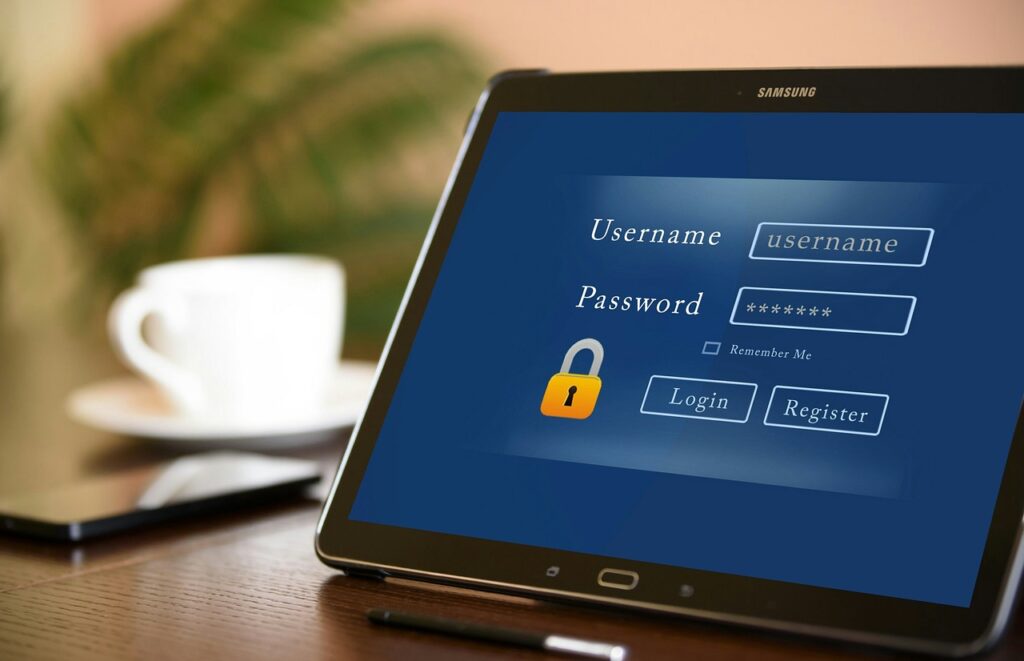
Given today’s technology and usage needs, we can no longer live without usernames and passwords in our daily lives. They are necessary to access almost everything from our grocery shopping to our investment funds account. Since we can’t have the same password for every account, it follows that we will end up with a long list to remember. At some point, we will need to come up with a system to store this information. So, how to organize passwords on paper if that is the method that you have chosen to keep track of everything?
NB: This post contains affiliate links which will enable us to earn some commission if you click and buy.
Should You Write Down Your Passwords?

First of all, you have to bear in mind that there are risks in writing down all your passwords on paper. No doubt, some will see this as the safest option because you will be storing this information offline and out of the reach of hackers.
Passwords that are written down is also easy to access. If you have a good system, you could find out your username and password for a site at a glance. There is no need for a password manager or app which adds another layer of complexity especially for those who are not so comfortable with a digital solution.
The Cons Of Writing Passwords On Paper
However, the downside to writing everything down is the risk of losing the paper or notebook that has all your sensitive information. If you lose it because of your own carelessness or natural disaster, all the information would be gone. If it is stolen or secretly accessed by others, someone could then log onto your accounts.
On the practical side, putting everything on paper is also less convenient when it comes to updating the information. After all, you do need to change your passwords regularly for safety reasons. The list will also get longer over time as you frequent more websites and writing will not be the most efficient solution if you need to keep track of a growing number.
Basically, there are pros and cons of a paper-based method to password organization and so does a digital solution. You just pick the one that you are most comfortable with and be aware of the risks. If you still prefer to write the information down, then just make sure that you store it securely and update it whenever you change any of your passwords.
How To Organize Passwords On Paper In A Secure Manner

Once you have a fair idea of how many passwords you need to manage, you can easily come up with an organization method that makes sense to you. For instance, if you just have a short list, you can just create a simple table with columns that list the website name, username, password, and any additional notes.
But if you have more to manage, then consider grouping them into category or arranging by alphabetical order. You can get a password book to help you along like the one shown above. It helps you to organize the information alphabetically with spaces for you to fill in additional details. Some would even include pages for wireless settings, software license details, and most visited websites.
Writing down your passwords doesn’t mean that you can’t add another layer of security to your information. Use a code for your passwords so that anyone who gains unauthorized access to your book would not be able to use the information to log onto your accounts. Come up with something that only you would understand.
For example, substitute numbers for letters and vice-versa. Use abbreviations instead of writing out the whole password especially if you tend to use a common word for most of your login credentials. You can also scramble or jumble up the password in a way that only you would understand. Alternatively, omit a letter or number so that the password would be incomplete and useless to someone who comes across your records.
Avoid The Obvious
It goes without saying that you should avoid the obvious words and personal information that will give away clues to your password. Even if you scramble the password or use an abbreviation when you write it down, something that is obvious can be easily guessed by those who know you.
Of course, take extra precaution with your password book and store it in a safe place. If you need to take it out with you, keep a watchful eye over it. Or you could just extract the passwords that you need rather than bring the whole record along.
How to organize passwords on paper is actually pretty simple. It just needs a start to keep the record going. It may seem daunting if you have a large number of accounts with different passwords. But you don’t need to write everything down at one go. Just record it down bit by bit as and when you log onto an account. Over time, you will have a complete list. Then, it is just a matter of keeping the password book updated.
Leave a Reply